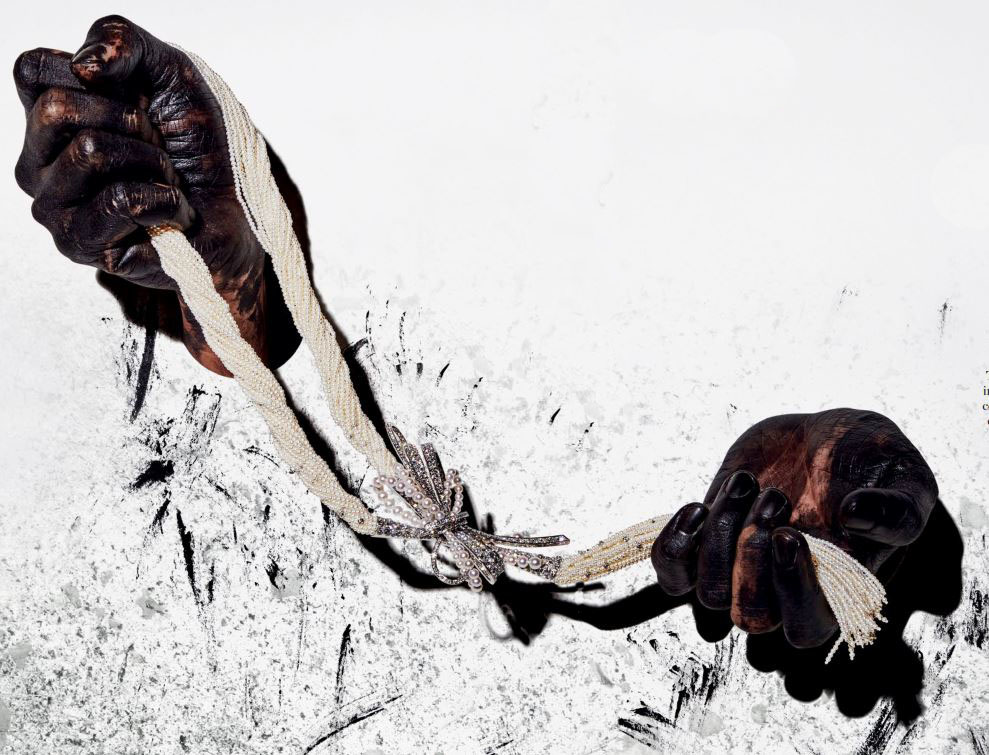Treasured symbols of wealth, status and power in civilisations through the ages, gemstones also conceal wonderful stories of natural history. We dig deeper into the processes behind the gems.


Treasured symbols of wealth, status and power in civilisations through the ages, gemstones also conceal wonderful stories of natural history. We dig deeper into the processes behind the gems.


CARNELIAN
Warm and vibrant, the 51 brownish-red stones on this necklace are carnelian, a variety of chalcedony. The chalcedony family is a large one and includes any material made of microcrystalline quartz, or tiny quartz crystals that cannot be seen by the naked eye. Carnelian gets its colour courtesy of iron-oxide impurities – and its hues can vary from pale orange to almost black. One of the earliest stones to be used in jewellery, carnelian was also valued by the ancient Egyptians, who believed it had the power to assist the soul in passing into the afterlife.
Carnelian, diamond, mother-of-pearl and pink gold necklace, from Van Cleef & Arpels.

TOPAZ
See the long pear shape of the light pink topaz stones on these earrings? There is good reason for this: In nature, most topaz crystals – which can be massive entities weighing a couple of hundred kilograms – are usually elongated in form. Cutting them in long oval shapes therefore helps to maximise the yield of these crystals, which are formed from fluorine-bearing vapours that are emitted when igneous rocks solidify. While pure topaz is colourless, impurities imbue topaz with a stunning variety of colours.
Topaz, tourmaline, diamond and rose gold earrings, from Chopard.

SAPPHIRE
Possessing a hardness second only to that of diamond, sapphire is a type of corundum – a crystalline form of aluminium oxide. Sapphire is practically identical to ruby, with the only difference being their colours – rubies are red, while corundum of other shades fall into the sapphire category. While many might associate sapphire with blue stones (perhaps thanks to the dark blue gem of Catherine, the Duchess of Cambridge’s widely publicised engagement ring), quality pink sapphires – such as the dazzlers on this necklace – are actually rarer.
Sapphire, diamond and white gold necklace, from Piaget.

CHRYSOPRASE
Like carnelian, chrysoprase is a variety of chalcedony. While carnelian gets its red hue because of iron oxide impurities, chrysoprase has a fresh green colour courtesy of small quantities of nickel, and frequently occurs in the quartz veins of nickel-bearing serpentine rocks. Prized for its colour rather than markings or patterns, chrysoprase is commonly cut in cabochons – that is, polished smooth, rather than faceted. But not all colours are created equal, of course. Intense greens are more valuable, while chrysoprase of darker hues is known as prase and is less sought after.
Chrysoprase, emerald, carnelian, diamond and yellow gold bracelet, from Cartier.


KUNZITE
The world of jewellery would have been much more boring if not for the late George Frederick Kunz. A self-taught mineralogist who served as Tiffany & Co’s resident gem expert for 53 years, he helped to introduce semi-precious stones into the fine jewellery world. In 1902, a purplish-pink stone that had been unearthed in California was delivered to his office, and Kunz identified it as a unique variety of a group of minerals known as spodumene. This stone, which is formed in igneous rock, was named kunzite in his honour the following year.
Kunzite, diamond and platinum necklace and ring, from Tiffany & Co.























